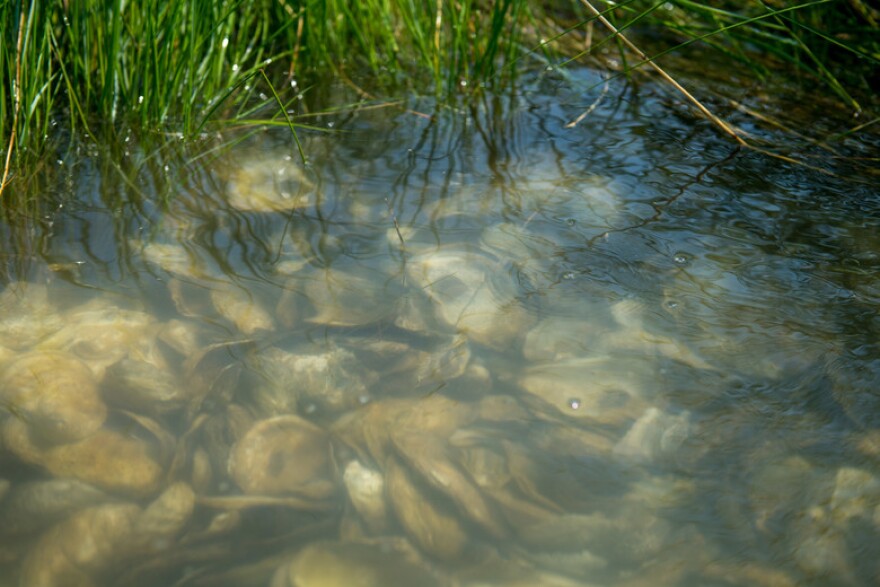Aquaculture is currently the third-most lucrative fishery in New England after lobster and scallops. Oysters and, increasingly, kelp, are two of the most commonly grown.
Now, a new study says aquaculture could also be an important way to address issues like nutrient pollution and habitat loss. In fact, the study found that New England’s waters are among the top 20 locations in the world with the greatest opportunities for restorative aquaculture.
Aquaculture hasn’t been associated with environmental benefits historically – in fact, it’s much more commonly known for pollution when too many fish are crowded into coastal waters.
But it turns out that shellfish and seaweed, farmed properly, can dramatically improve water quality.
“Shellfish and seaweeds are at the bottom of the food web and they're able to actually take up nutrients from the water column,” said Seth Theuerkauf, aquaculture scientist with The Nature Conservancy and lead author of that global assessment.
Seaweed can also restore the proper PH balance of the ocean, Theuerkauf said. Ocean acidification is caused by excess carbon dioxide in the air, which forms carbonic acid in the ocean. Seaweed uses carbon dioxide to grow, causing the water nearby to become less acidic.
“We're beginning to get a sense that seaweed farms could be able to provide some localized benefits in terms of reducing the impacts of ocean acidification,” Theuerkauf said.
Shellfish grow better in less acidic waters, so there may be a benefit to growing shellfish and seaweed in the same area.
There’s another surprising benefit emerging from shellfish and seaweed aquaculture, and that’s restoration of nearby wild ocean habitat, Theuerkauf said. In addition to taking excess nitrogen out of the water, shellfish aquaculture gear like cages, baskets, and bags allow juvenile fish take refuge from predators, he explained.
What makes New England a great area for aquaculture?
Theuerkauf’s report incorporated factors around governance, food security, wastewater treatment and other things to arrive at the best places to grow more shellfish and seaweed.
The report sought to describe the places where aquaculture would provide the greatest environmental benefit, “but also social benefit, as well,” Theuerkauf said.




